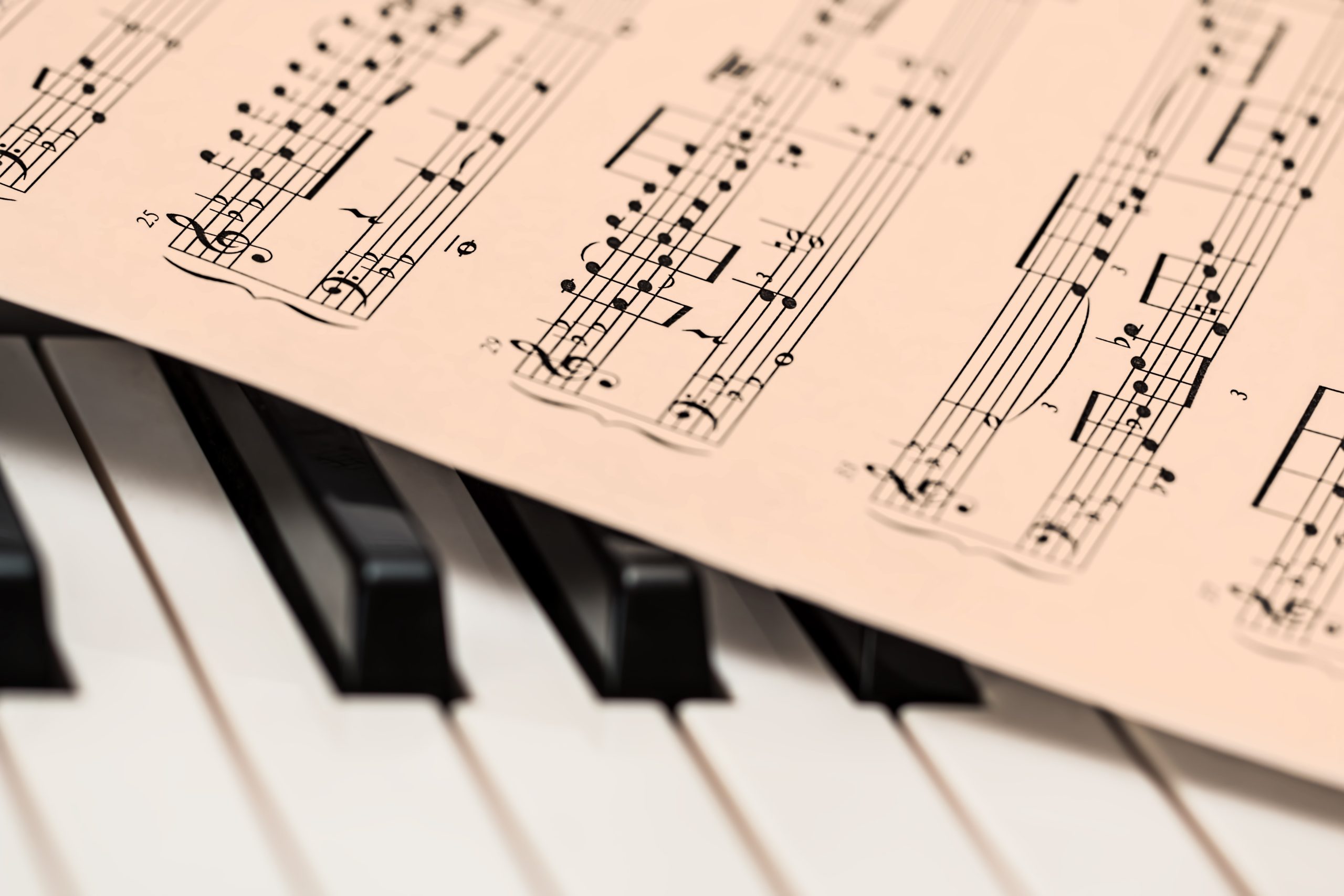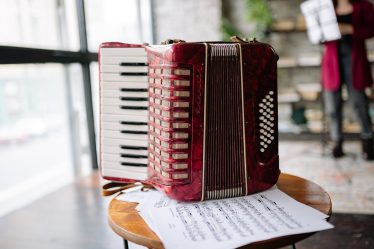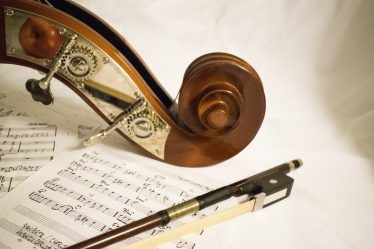
Piano Teaching: 5 Steps for Beginners to Get Started and Maximize Your Practice
The piano is a beautiful instrument that has been enjoyed by musicians and music lovers for centuries. Whether you’re a beginner looking to learn the basics of playing the piano or an experienced player seeking to improve your skills, there’s always more to discover about the piano. In this article, we’ll explore some of the key questions and considerations related to learning to play the piano, including the most effective learning methods, the best age to start, and the importance of practice and goal setting. We’ll also cover topics such as piano maintenance and care, choosing the right piano, and exploring different musical styles and theory. Whether you are a seasoned pro or just starting out, there is something in this article for everyone who loves the piano.
“The piano is the instrument that I love most, the one that gives me the most pleasure. It is an instrument that has an incredible range of expression, and it is capable of conveying every emotion. When I play the piano, I feel that I can express everything that is in my heart and mind.”
– Martha Argerich, Argentine pianist and conductor
Step 1: Finding a Teacher or Tutor and Staying Motivated
The best age to start piano lessons is a matter of personal preference and lessons fully depends on the individual’s motivation and willingness to practice. For children, some may be ready to learn as early as 4 or 5 but the recommended age is between 6 and 9 years old. However, it’s important to note that it is never too late to learn a new skill – and the piano is no exception. Though there are advantages of starting young, the two most important factors in learning anything new is motivation and a strong commitment to practicing your skills regularly. It’s a good idea to start with small, achievable goals and gradually increase the difficulty as you improve. For example, you might start by practicing a few scales or simple melodies each day and gradually work up to more complex pieces. It can also be helpful to write down a list of reasons why you’re specifically motivated to learn to play the piano. For instance, learning to play an instrument can provide you with the following benefits:
- Improve your creativity, memory and coordination
- Reduce stress
- Promote self-discipline
- Provide a sense of accomplishment and improve your self-confidence
Write down a list of things that motivate you and keep returning to it whenever you struggle with your new skill.
In addition to practicing and maintaining your skills and motivation on your own, it can be helpful to attend regular piano classes or lessons with a teacher or tutor. These classes can provide structured guidance and support as you progress and can also be a great way to meet other musicians and music lovers.
Where do I find a good piano teacher or tutor?
Finding a good piano teacher or tutor is an important step in learning to play the piano. A good teacher will be able to assess your current skill level, set goals with you, and provide guidance, support and motivation as you progress. When looking for a teacher or tutor, it’s a good idea to ask for recommendations from friends or family members who have taken piano lessons or to search online for teachers in your area. Learning to play the piano online is a convenient and flexible option that allows you to learn at your own pace from the comfort of your own home. When interviewing potential teachers, always ask about their teaching style, experience and qualifications to make sure that it matches your needs and wishes for learning. Online learning platforms can be a perfect place to find a teacher or tutor, as this gives you the opportunity to take piano lessons independent of where you are located.
If you wish to find local piano classes, teachers or tutors close to where you live, you might also find these online – some learning platforms will offer a search option where you can look up local offers, for instance piano classes in London, piano lessons in Manchester, a piano teacher in Birmingham or a piano tutor in Leeds.
The cost of piano classes will vary depending on your location, the level of the instructor, and the type of lessons that you choose. In-person, private lessons with a highly qualified instructor may be quite a bit more expensive than for instance group lessons, private tutoring or online learning. In general, you can expect to pay anywhere from 20 to 100 euros per lesson, depending on your choice of learning method. Typically, private and in-person lessons with a professional piano instructor can help you reach your goals faster, but with the right amount of determination and self-discipline you can learn to play the piano any way you decide.
Step 2: How to Improve Your Piano Skills
How long it takes to learn to play the piano depends on many factors, including your natural aptitude for music, the amount of time you can devote to practice, and the type of learning method you are using. Some people may be able to learn the basics of the piano in a few months or a year, while others may take longer to progress. In general, it is important to be patient and consistent with your practice, and to set achievable goals for yourself.
The frequency of piano practice is important for making progress on the instrument. How often you should practice will depend on your goals and the amount of time you have available, but most experts recommend trying to set aside a minimum of 30 minutes each day to practice playing. It is generally better to practice for shorter periods more frequently, rather than trying to fit in a long practice session once a week.
As you progress from beginner to intermediate level on the piano, you will want to focus on developing your skills in several areas. This may include learning more advanced pieces, improving your technique, and developing your musicality. It is a good idea to set specific goals for yourself, such as learning a certain number of new pieces or mastering a certain technique, and to track your progress over time.
There are many different piano exercises that can help you improve your technique and become a more skilled player. These may include scales, arpeggios, and finger exercises, as well as more advanced technical studies. It is a good idea to work with a teacher or use a book or online resource to find exercises that are appropriate for your current skill level and that will help you achieve your goals.
Step 3: Buying Your First Piano
Now that we’ve established what kind of learning resources you need to start working on your new skills, it’s time to decide what type of piano you need to get started.
Generally speaking, you will be choosing between an acoustic and a digital piano, which have several key differences in terms of technicality, sound, size, appearance and functionality. Acoustic pianos are traditional instruments that are made of wood and metal, and they produce sound through a series of strings that are struck by hammers when the keys are played. Digital pianos are electronic instruments that mimic the sound and feel of an acoustic piano, but they do not have strings or hammers.
Should I choose a digital or an acoustic piano?
When deciding whether to purchase an acoustic vs. a digital piano, some things to consider could be price, portability, size, sound quality and design.
Some advantages of digital pianos:
- They’re generally more convenient as they’re small and light, making them a good option for those who travel or don’t have a dedicated space for their piano.
- They don’t need to be tuned, as there are no hammers and strings to maintain, which can save time and money.
- They come with a variety of built-in sounds, including different instrument tones and sound effects and a built-in metronome. This allows you to play a wider range of music and experiment with different styles.
- The volume can be adjusted, or it can connect to headphones, allowing you to practice without disturbing family members or neighbors.
- Finally, digital pianos are generally easier to use than acoustic pianos, as they often have features such as built-in lessons and the ability to record and play back what you’re practicing. This can be helpful for beginners who are just starting out.
Advantages of playing acoustic pianos:
- They generally have a more rich, authentic sound which is difficult to replicate in a digital piano.
- They have a wider dynamic range than digital pianos, meaning that they can produce are greater range of loud and soft sounds.
- The physical experience of playing an acoustic piano is very different to that of a digital piano. When playing an acoustic piano, you can feel the resistance of the keys and the movement of the hammers, which can provide a sense of physical feedback that can be helpful for developing good technique.
- Finally, acoustic pianos are timeless instruments that have been enjoyed by musicians for centuries. They are often considered to be works of art in and of themselves, and they can be a beautiful addition to any home.
Shopping for a used piano can be a cost-effective option, but as a piano novice it is important to be careful and do your research. When shopping for a used piano, be sure to inspect the instrument thoroughly for any signs of damage or wear, and if possible, bring along someone with a general knowledge about pianos. Always ask to try the piano before bringing it home, as this will ensure that the instrument is a good fit for you and that it’s working properly.
Choosing the right piano for you and your space is an important step to ensure that the instrument fits comfortably in your home and to your preference and physique. Pianos come in a variety of sizes, from simple keyboards to small upright pianos and large grand pianos. Consider the size of the room where the piano will be placed, as well as the height and sound preference of the player. It is a good idea to measure the space and if possible, try out a few different models in person to get a sense of what will work best for you. For all types of pianos, the most important factor to go by is your own set of ears. Sound preference is highly subjective, and the right piano for you is ultimately that which sounds best in your ears. It’s a good idea to try a variety of different pianos, until you find your perfect match.
Step 4: Piano Maintenance and Care
Proper maintenance and care of your piano, whether acoustic or digital, is essential to keep it sounding its best. For acoustic pianos, this includes regular cleaning and checking for any repairs that may be needed. It’s also a good idea to have it tuned at least once a year. Whenever the piano is not used, protect it with a good quality piano cover to prevent dust and damage.
For digital pianos, proper care involves keeping the instrument clean and free of dust and making sure to follow the manufacturer’s recommended maintenance guidelines. Also make sure that the power cord is in good condition, and that it is never connected to a faulty outlet.
Step 5: Learning Music Theory and Finding your Own Style
Being able to read sheet music can help you understand and play a wide variety of musical styles. Sheet music is a written representation of music that shows you the pitches (notes) and rhythms of a piece of music. It consists of staffs (horizontal lines) on which notes are written, as well as symbols that indicate how the music should be played. The top staff represents the right hand, and the bottom staff represents the left hand. There are many resources available for learning to read music, including books, online courses and platforms, and private lessons.
If you’re looking to gain a fundamental understanding of music as you embark on your learning journey, music theory will teach you the musical principles and language. Learning the basic concepts such as scales, chords, and harmony can help you see how different pieces of music are constructed and give you a deeper understanding of the new skills you’re acquiring. As a more experienced pianist, music theory can also help you understand how to improvise and compose your own music.
Do I need to learn to read sheet music to play the piano?
It is generally a good idea to start by learning the basic elements of music notation, such as note values, rhythms, and key signatures, and then building on that foundation with more advanced concepts. Rhythm, for example, is an essential aspect of learning to play any musical instrument, and it is important to understand how rhythms are written and to be able to read and interpret rhythmic notation. Rhythms are written using a combination of note values (such as whole notes, half notes, and quarter notes) and rests. It is important to count the rhythms correctly and play the notes and rests at the correct times. When you’re new to playing the piano, it might be helpful to buy and use a metronome to assist you in keeping the beat.
Though it is helpful to learn basic music theory as a part of learning to play the piano, it’s also possible to learn to play the piano by ear. Some people are naturally gifted at this, while others may need to work a bit harder to develop their ear. To learn to play by ear, you may want to start by listening to a piece of music and trying to replicate it on the piano, or by playing simple melodies and chords and experimenting with different sounds and patterns. It is important to note that you can play and enjoy the piano your whole life without ever needing to learn music theory or sheet music. It’s important to remember that not everyone learns in the same way. Consider your own learning style and needs when choosing a method or approach to learning the piano, keep an open mind and be willing to try different approaches until you find what works best for you.
What are some good warm-up exercises for playing the piano?
Once you’re ready to start playing on the instrument, it can be helpful to start by preparing yourself mentally and physically. Good piano warm-up exercises before practicing or performing can help you get your fingers and mind ready to play. These may include scales, arpeggios, and finger exercises, as well as more specific exercises that target certain areas of technique. It is generally a good idea to start with simple exercises and gradually work up to more complex ones, and to vary your warm-up routine to keep things interesting. Some people find it helpful to start with a physical warm-up, such as stretching or massaging the hands and wrists, before moving on to musical exercises. Another way of preparing yourself and getting in the right mindset is to listen to music and composers that inspire you and songs that you would like to learn how to play yourself.
What piano songs are good for beginners?
Appropriate piano melodies for beginners can vary depending on your interests and goals. Some classic beginner piano pieces include “Twinkle, Twinkle Little Star,” “Happy Birthday,” and “Jingle Bells.” Give yourself time to really get comfortable with these tangible classics, before putting pressure on yourself to learn more advanced melodies. As you progress, you may want to start practicing with songs that you personally like, to keep you motivated as you enhance your skills.
Once you’ve gaining some foundational skills, playing different styles of music on the piano can be a fun and rewarding way to expand your musical horizons. Styles such as classical, jazz and pop all have their own distinctive characteristics and techniques and learning to play these styles can help you develop your skills as a pianist. To learn a new style, you may want to start by listening to recordings of the music, and then try playing along with simple pieces or exercises.
Learning about piano composers and their music and finding your own favorite artists is also a great way to deepen your appreciation for the instrument and to discover new repertoire. Some well-known piano composers include Ludwig van Beethoven, Frederic Chopin, and Wolfgang Amadeus Mozart. If you are looking for currently active artists, Martha Argerich is widely regarded as one of the greatest pianists of the 20th and 21st centuries. She is known for her powerful and expressive performances, as well as her technical virtuosity and musicality and she is still giving concerts today.
In Conclusion: A Final Inspiration to Start Your Musical Journey
Now that we’ve gone through all the basic questions of piano learning, it’s time to start playing! Learning to play the piano can be a deeply rewarding and enriching experience that brings joy and inspiration to your life. Whether you’re a beginner just starting out on your musical journey or an experienced player looking to improve your skills, the piano is an incredibly versatile instrument that offers endless opportunities for musical exploration and expression. By setting goals, practicing regularly, and seeking out quality piano teaching and tutoring, you can make the most of your piano learning journey and achieve your musical aspirations. And remember, learning to play the piano should never become a chore – it is about having fun and developing new skills. Happy learning!


